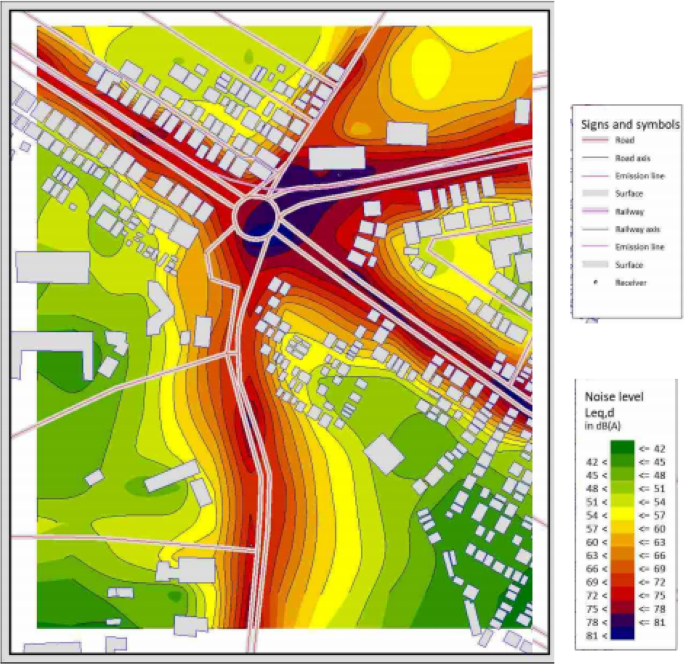


The environmental noise directive as a “toolbox” for smarter cities
#Noise mapping series#
The analysis is based on a series of practical cases studies carried out in Greece (and in Europe) and will show how these smart tools had to adapt to the twenty-first-century environmental issues.Ģ. This chapter offers, therefore, an analysis of the tools that have been created in the framework of this directive and aims to show how these specialized tools contribute to an intelligent development of European cities and wider urban territories. In the Green Paper on Future Noise Policy, the Commission addressed noise in the environment as one of the main environmental problems in Europe”. As the directive stipulates, “it is part of community policy to achieve a high level of health and environmental protection, and one of the objectives to be pursued is protection against noise. The European Environmental Noise Directive 2002/49 implemented in all EU Member States, almost 18 years ago, provided several smart tools to access and manage environmental noise and enhance cities’ development. This chapter will also evoke criticisms of these smart tools and will present results from several-state of the art-case studies especially regarding the practical and theoretical limits they face. New methodology tools have been developed especially regarding soundscaping and environmental acoustic rehabilitation of urban areas, and the respective chapter will describe the progress being made on these smart developments of cities and infrastructures. Today, 18 years after its first edition, the European Directive 2002/49/EC is needed to be reformulated to take into account all defects that have been identified and to adapt as well as possible to contemporary constraints.
#Noise mapping professional#
The majority of European Member States (MS) has enforced this directive and completed fully or, in some cases, partially, with European smart cities to use and share the same criteria and methodologies and along with transport operators to communicate to the public the relevant results and respective action plans by ensuring the citizen’s awareness about the environmental noise, the quality acoustic environment, and their effect to their professional and everyday lifestyle. This information is proving critical to the Scottish government’s strategic approach to address noise exposures.Since the European Directive 2002/49, large transportation infrastructure along with large urban areas should have completed strategic noise maps (SNM) and the relative noise action plans (NAP). Our unique prioritization scoring tool makes it possible to identify where to take action first by pinpointing areas where the most people are affected by noise. The noise maps resemble heat diagrams with clear hotspots indicating areas with the greatest noise, making it easier to understand and accurately interpret information at a glance. The result significantly improved output graphics by producing noise contours for the maps and helping to automate the data handling at multiple stages by streamlining detailed spreadsheets that contained information about noise exposure on each property.

#Noise mapping software#
Our approach integrated traditional 3D noise mapping software with a geographical information system tool. The tool created a functional map that better interpreted areas of greatest need for noise abatement. Our scope of services also included data collection and preparation, noise modeling and strategic noise map generation and analysis.

In Scotland, noises caused from road, rail and air traffic, and industrial activities are required to meet END compliance.ĪECOM developed an automated noise mapping tool to help the Scottish government track noise levels and ensure compliance across the country, including Glasgow, Edinburgh, Aberdeen, and Dundee. The action plans are intended to preserve the environmental noise quality of those areas with desirable levels, while reducing levels in areas where there is a potential for negative impact. Noise modeling and mapping need to be addressed in agglomerations-areas of dense population or industrial activity. END’s objectives determine a population’s exposure to noise through mapping, provide public access to environmental noise information, and establish action plans based on the mapping results. To regulate noise levels in dense populations, the European Union and the European Parliament enacted the Environmental Noise Directive (END) in 2002.


 0 kommentar(er)
0 kommentar(er)
